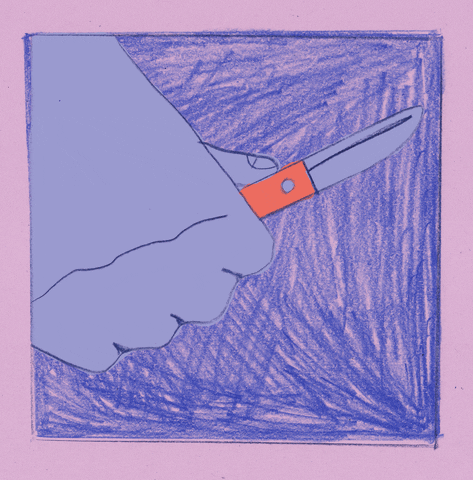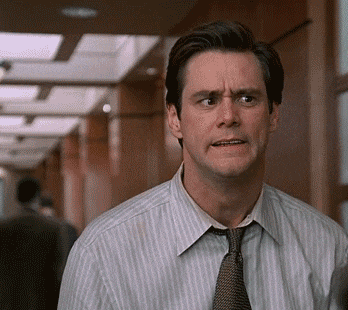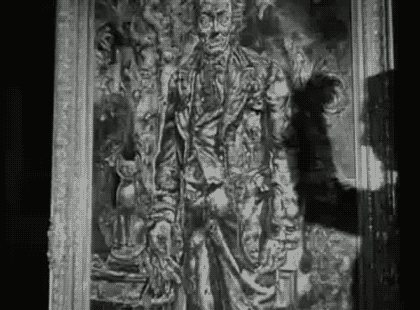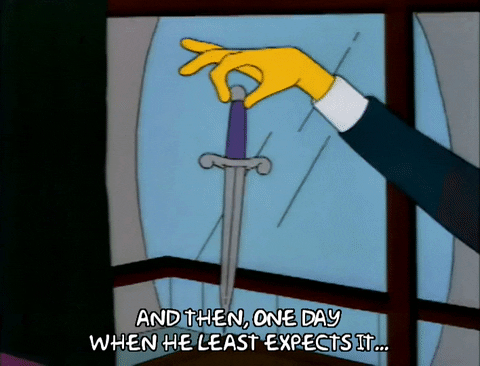One of the biggest debates in literary studies is this: should literature convey a moral message?
More broadly, should the production of art come with moral responsibility?
Depending on the era one lives in, the answer to this philosophical question could differ significantly. In Medieval England, morality plays, which enact representations of bible stories or personify moral qualities to deliver moral messages, were a popular genre.
As time went on, 19th-century Realist writers such as George Eliot, Leo Tolstoy and Gustave Flaubert would moralise through the novel, in which they communicated ideas of faith, justice, virtue, human decency and more.
Towards the latter half of the 19th century, however, there emerged a movement called Aestheticism, which advocated the creed of ‘art for art’s sake’, the idea that creative expression is purely a matter of aesthetics, and should not be exploited for moral instruction.
Coupled with Aestheticism was the Decadence, a cultural movement in the fin de siecle which promoted values such as extravagance, artificiality and excess of living. The ethos was very much a kind of extreme embrace of carpe diem, and its message one of ‘to hell with morality, you only have one life to live, so go live it – and live it up big!’

This zeitgeist is perhaps best conveyed by the French poet Charles Baudelaire, one of the earliest figures to be associated with Decadence, who writes in his prose poem anthology Paris Spleen:
“What can an eternity of damnation matter to someone who has felt, if only for a second, the infinity of delight?”
Across the English Channel, Oscar Wilde – a prominent figure in the late 19th-century London literati – was a champion of Aesthetic and Decadent values in both his work and life.
But for this, Wilde ultimately suffered, as he was imprisoned and exiled on charges of “gross indecency” (read: homosexuality) in 1895. He would die at the relatively young age of 46.


Introducing The Picture of Dorian Gray
Given Wilde’s belief in ‘art for art’s sake’, it would perhaps be ironic to read his only novel, The Picture of Dorian Gray, in a way that ‘searches for deeper meaning’ – a tendency that many modern students of literature have been trained to develop at school (with Wilde no doubt turning in his grave).
But of course there’s ‘meaning’ to his novel, even if it’s just ‘don’t go looking for meaning when you read’.
For Dorian Gray is one of the most harrowing cautionary tales about what could happen to our soul when we willingly give in to evil instincts and unbridled desires.

When the painter Basil Hallward presents Dorian with an exquisite portrait of the latter, Dorian is so taken aback by the perfection of his youth, he grows jealous of his painted doppelganger and makes a wish that he and his portrait swap places.
While the real Dorian would stay young forever, then, his portrait would take on all the natural signs of aging as time passes.
Magically, Dorian’s wish is granted, and once he realises his ‘superpower’, he begins to act with reckless abandon and moral disregard, going off on all sorts of sexual exploits and ultimately becoming a social pariah.
As this sort of wayward behaviour sets him on a path of self-destruction, the plot spirals into a tale of spiritual decay as it plunges towards a foregone conclusion.

Notwithstanding the novel’s philosophical depth, Wilde shows great technical skill in this work, specifically, through his use of foreshadowing.
Instead of writing an ironic ‘What does Dorian Gray teach us about morality’ kind of post, then, I figured that we could do our analysis from a more formalist angle this time, and take a look at how foreshadowing works as an undercurrent in Wilde’s, well, wild, narrative.
But first… what’s foreshadowing?
In literature, foreshadowing is defined as –
a literary device in which the writer gives an advance hint of what is to come later in the story
These usually take the form of symbols or clues, which the writer would pepper throughout the plot for readers to piece together.
It’s also a retrospective device, which means that it helps us make sense of the overall plot in hindsight.

Reading Chapter 2 of Dorian Gray: “Don’t!… It would be murder!”

In Dorian Gray, the titular portrait is a key narrative locus, with every change to this object (or symbol) signifying a critical development in the plot.
In Chapter 2, when the painter Basil Hallward presents Dorian with a portrait of the latter, Dorian reacts in a surprising way that will determine the course of the novel:
As [Dorian looked at the painting], a sharp pang of pain struck through him like a knife and made each delicate fibre of his nature quiver.
His eyes deepened into amethyst, and across them came a mist of tears. He felt as if a hand of ice had been laid upon his heart.
“Don’t you like it?” cried Hallward at last, stung a little by the lad’s silence, not understanding what it meant.
[…]
“How sad it is!” murmured Dorian Gray with his eyes still fixed upon his own portrait. “How sad it is! I shall grow old, and horrible, and dreadful. But this picture will remain always young. It will never be older than this particular day of June…. If it were only the other way! If it were I who was to be always young, and the picture that was to grow old! For that—for that—I would give everything! Yes, there is nothing in the whole world I would not give! I would give my soul for that!”
As Dorian makes a Faustian wish to ‘give his soul’ for eternal youth, he clinches the deal for the moral degeneration he’ll be subjected to for the rest of his life.
After all, to sell one’s soul is the ultimate pact with the Devil, and for Dorian to do this in exchange for something as superficial as the beauty of youth (or anything, for that matter) can only bode ill.
The scene continues –
“I am jealous of everything whose beauty does not die. I am jealous of the portrait you have painted of me. Why should it keep what I must lose? Every moment that passes takes something from me and gives something to it. Oh, if it were only the other way! If the picture could change, and I could be always what I am now! Why did you paint it? It will mock me some day—mock me horribly!” The hot tears welled into his eyes; he tore his hand away and, flinging himself on the divan, he buried his face in the cushions, as though he was praying.
“This is your doing, Harry,” said the painter bitterly.
Lord Henry shrugged his shoulders. “It is the real Dorian Gray—that is all.”
“It is not.”
“If it is not, what have I to do with it?”
“You should have gone away when I asked you,” he muttered.
“I stayed when you asked me,” was Lord Henry’s answer.
“Harry, I can’t quarrel with my two best friends at once, but between you both you have made me hate the finest piece of work I have ever done, and I will destroy it. What is it but canvas and colour? I will not let it come across our three lives and mar them.”
Dorian Gray lifted his golden head from the pillow, and with pallid face and tear-stained eyes, looked at him as he walked over to the deal painting-table that was set beneath the high curtained window. What was he doing there? His fingers were straying about among the litter of tin tubes and dry brushes, seeking for something. Yes, it was for the long palette-knife, with its thin blade of lithe steel. He had found it at last. He was going to rip up the canvas.
With a stifled sob the lad leaped from the couch, and, rushing over to Hallward, tore the knife out of his hand, and flung it to the end of the studio. “Don’t, Basil, don’t!” he cried. “It would be murder!”
“I am glad you appreciate my work at last, Dorian,” said the painter coldly when he had recovered from his surprise. “I never thought you would.”
“Appreciate it? I am in love with it, Basil. It is part of myself. I feel that.”
Dorian may be having a sissy fit when he wails that “the portrait will mock [him] horribly some day”, but it’s certainly an uncanny one. Ironically, the portrait will mock him not for the youth it ‘contains’, but as a mirror of his moral decay and gradual rotting of the soul.
Lord Henry’s rhetorical question “What is it but canvas and colour?” is likewise ironic, as we’ll go on to see that the portrait is no mere canvas and colour, but a supernatural force which will transform into an ugly, evil, sin-ridden version of Dorian – indeed, “the real Dorian Gray”.
Another major point of foreshadowing in this moment is Basil’s reaching for the palette-knife to destroy the canvas.

While Basil attempts to “rip up” the painted Dorian out of hurt and exasperation, Dorian will eventually go on to murder Basil by stabbing him with a real knife in Chapter 13, as will he ultimately rip up this portrait in Chapter 20, by which point of the novel it will have tormented him for too long.
For a reader who returns to this scene after reading the book, then, Dorian’s outraged injunction – “Don’t, Basil, don’t! It would be murder!” – should ring doubly ironic, as it is Dorian himself who will descend into a murderous rage.
Reading Ch. 13 of Dorian Gray: “It is too late”

Being of such different temperaments, Dorian Gray and Basil Hallward gradually drift apart after the creation of the portrait.
Over the years, however, Dorian would hide the accursed portrait in an old room at his mansion, which he’d observe from time to time for more grotesque signs as his lifestyle became ever more debauched.
After many years of estrangement, Basil and Dorian bump into each other on the street one night.
As a result of this chance encounter, Dorian decides to unveil the devastating truth about the portrait to his old friend –
“Shut the door behind you,” [Dorian] whispered [to Hallward], as he placed the lamp on the table.
Hallward glanced round him with a puzzled expression. The room looked as if it had not been lived in for years. A faded Flemish tapestry, a curtained picture, an old Italian cassone, and an almost empty book-case—that was all that it seemed to contain, besides a chair and a table. As Dorian Gray was lighting a half-burned candle that was standing on the mantelshelf, he saw that the whole place was covered with dust and that the carpet was in holes. A mouse ran scuffling behind the wainscoting. There was a damp odour of mildew.
“So you think that it is only God who sees the soul, Basil? Draw that curtain back, and you will see mine.”
Even within a single scene, there are telling signs that forebode Dorian’s tragic fate, be it the symbolism of the “half-burned candle”, or “the carpet [that] was in holes”.
Diminished and hollowed out by his hedonistic way of life, Dorian – youthful though he may look – is no more than a receptacle for a withering soul.
When Basil sees what’s happened to his creation, he can’t believe his eyes –

An exclamation of horror broke from the painter’s lips as he saw in the dim light the hideous face on the canvas grinning at him. There was something in its expression that filled him with disgust and loathing. Good heavens! it was Dorian Gray’s own face that he was looking at! The horror, whatever it was, had not yet entirely spoiled that marvellous beauty. There was still some gold in the thinning hair and some scarlet on the sensual mouth. The sodden eyes had kept something of the loveliness of their blue, the noble curves had not yet completely passed away from chiselled nostrils and from plastic throat. Yes, it was Dorian himself. But who had done it? He seemed to recognize his own brushwork, and the frame was his own design. The idea was monstrous, yet he felt afraid. He seized the lighted candle, and held it to the picture. In the left-hand corner was his own name, traced in long letters of bright vermilion.
It was some foul parody, some infamous ignoble satire. He had never done that. Still, it was his own picture. He knew it, and he felt as if his blood had changed in a moment from fire to sluggish ice. His own picture! What did it mean? Why had it altered? He turned and looked at Dorian Gray with the eyes of a sick man. His mouth twitched, and his parched tongue seemed unable to articulate. He passed his hand across his forehead. It was dank with clammy sweat.
As Dorian Gray is the natural descendant of Doctor Faustus, so Basil Hallward is the artistic successor of Victor Frankenstein, both being unwitting creators of a monstrous being.
When “the hideous face on the canvas [grins] at him”, Basil’s feeling of “his blood… chang[ing] in a moment from fire to sluggish ice” is apt, as this foreshadows his imminent death at the hands of Dorian, whose moral destitution – as reflected by the portrait – will compel him to murder.
In a minute, Basil’s blood going from fire to ice will cease to be a matter of figurative expression, and become one of literal resolution for a Dorian Gray who’s blinded and burdened by sin.
Still, the righteous painter tries – for one last time – to deliver his old friend out of darkness –
“Good God, Dorian, what a lesson! What an awful lesson!” There was no answer, but he could hear the young man sobbing at the window. “Pray, Dorian, pray,” he murmured. “What is it that one was taught to say in one’s boyhood? ‘Lead us not into temptation. Forgive us our sins. Wash away our iniquities.’ Let us say that together. The prayer of your pride has been answered. The prayer of your repentance will be answered also. I worshipped you too much. I am punished for it. You worshipped yourself too much. We are both punished.”
Dorian Gray turned slowly around and looked at him with tear-dimmed eyes. “It is too late, Basil,” he faltered.
“It is never too late, Dorian. Let us kneel down and try if we cannot remember a prayer. Isn’t there a verse somewhere, ‘Though your sins be as scarlet, yet I will make them as white as snow’?”
“Those words mean nothing to me now.”
“Hush! Don’t say that. You have done enough evil in your life. My God! Don’t you see that accursed thing leering at us?”
Dorian Gray glanced at the picture, and suddenly an uncontrollable feeling of hatred for Basil Hallward came over him, as though it had been suggested to him by the image on the canvas, whispered into his ear by those grinning lips. The mad passions of a hunted animal stirred within him, and he loathed the man who was seated at the table, more than in his whole life he had ever loathed anything. He glanced wildly around. Something glimmered on the top of the painted chest that faced him. His eye fell on it. He knew what it was. It was a knife that he had brought up, some days before, to cut a piece of cord, and had forgotten to take away with him. He moved slowly towards it, passing Hallward as he did so. As soon as he got behind him, he seized it and turned round. Hallward stirred in his chair as if he was going to rise. He rushed at him and dug the knife into the great vein that is behind the ear, crushing the man’s head down on the table and stabbing again and again.
You will recall that in Chapter 2, Basil reaches for the “long palette-knife” to destroy the painting – only to be stopped by a histrionic Dorian.
Here, the flashback comes full circle, but is made much more macabre with Dorian’s reaching for an actual knife, an alluring “something [that] glimmered on the top of the painted chest that faced him”, which he then stabs Basil with repeatedly.
Despite the painter’s pleas for his wayward friend to repent, as with his biblical allusions to the Lord’s Prayer (“Lead us not into temptation.”) and the Old Testament Book of Isaiah (“Though your sins be as scarlet, yet I will make them as white as snow”), Dorian will give in to the temptation of sin – the ultimate manifestation of which will be his murder of Basil.
And when Dorian tells Basil that “it is too late”, he’s not only suggesting this about the latter’s life, but even more so, about his own state of being, as he realises the extent to which he has utterly compromised his moral decency, and as such, can see no hope for either rectification or redemption. It can only go further downhill from here.

Reading Ch. 20: “It would kill the past, and when that was dead, he would be free”

The way the final chapter begins is a great example of ironic foreshadowing:
It was a lovely night, so warm that he threw his coat over his arm and did not even put his silk scarf round his throat. As he strolled home, smoking his cigarette, two young men in evening dress passed him.
For all the loveliness and warmth outside, what’s soon to take place within Dorian’s mansion will be anything but.
As the protagonist realises that he no longer derives any pleasure from life, and that no amount of hedonistic indulgence can overshadow the compounding guilt that daily weighs down on his conscience, he decides to put an end to the painting’s existence.
In fact, Dorian’s greatest problem is perhaps that he’s not quite rotten enough.
Unlike Lord Henry, whose absolute cynicism inures him to the inconveniences of compunction, Dorian – despite his immoral excesses in behaviour – can’t fully rid himself of the moral spectre that ever looms over his mind.
Call it ironic, call it tragic, but that Dorian feels troubled by his sins is the biggest cause of his ultimate undoing –
But [Basil’s] murder—was it to dog him all his life? Was he always to be burdened by his past? Was he really to confess? Never. There was only one bit of evidence left against him. The picture itself—that was evidence. He would destroy it. Why had he kept it so long? Once it had given him pleasure to watch it changing and growing old. Of late he had felt no such pleasure. It had kept him awake at night. When he had been away, he had been filled with terror lest other eyes should look upon it. It had brought melancholy across his passions. Its mere memory had marred many moments of joy. It had been like conscience to him. Yes, it had been conscience. He would destroy it.
He looked round and saw the knife that had stabbed Basil Hallward. He had cleaned it many times, till there was no stain left upon it. It was bright, and glistened. As it had killed the painter, so it would kill the painter’s work, and all that that meant. It would kill the past, and when that was dead, he would be free. It would kill this monstrous soul-life, and without its hideous warnings, he would be at peace. He seized the thing, and stabbed the picture with it.
In a way, Dorian’s decision to destroy the painting is consistent with his hedonism – do only that which brings one pleasure, and get rid of what doesn’t.
The knife makes a final appearance here, with Dorian’s action of having “cleaned it many times… till there was no stain left upon it” symbolising the man’s maddening desire to wash away his sin.
But the ‘cleaner’ the knife is, the more “it was bright, and glistened”, and the more of a temptation it becomes.
By this point, Dorian has entirely externalised his immoral self onto the portrait, because not doing so would imply the pain of facing up to the truth – that there really is no ‘external’ carrier of evil.
To echo his own paradoxical words right before he kills Basil in Chapter 13 – “Each of us has heaven and hell in him”.
Wilde’s repetition of the third-person neuter pronoun “it”, however, suggests Dorian’s continual self-denial, as the character’s pathological obsession with seeming perfect pushes him into thinking that it isn’t him, but an external “it” – the knife – who did and will do the dirty work (killing Basil and destroying the painting).

What he hopes would be the moment to end all suffering, however, becomes a moment of reckoning: as Dorian stabs at the “monstrous soul-life”, he’s not “killing the past”, but removing the real, underlying self in the present. And with this, the novel ends with the shattering of Dorian’s supernatural cover:
When [the servants] entered, they found hanging upon the wall a splendid portrait of their master [Dorian] as they had last seen him, in all the wonder of his exquisite youth and beauty. Lying on the floor was a dead man, in evening dress, with a knife in his heart. He was withered, wrinkled, and loathsome of visage. It was not till they had examined the rings that they recognized who it was.
Indeed, then, with his death, Dorian does, in a way, become metaphysically “free” and “at peace”. At last, there is no longer any need to reconcile the demands of morality with life.

I’ve never been a fan of Gothic fiction, but Dorian Gray is by any objective measure a great work of art.
In a way, it’s the oldest tale in the Book (that of Man succumbing to evil and suffering as a result), but with Wilde’s poetic prose and philosophical insight, the story takes on a new life and continues to be a great read for us today.

